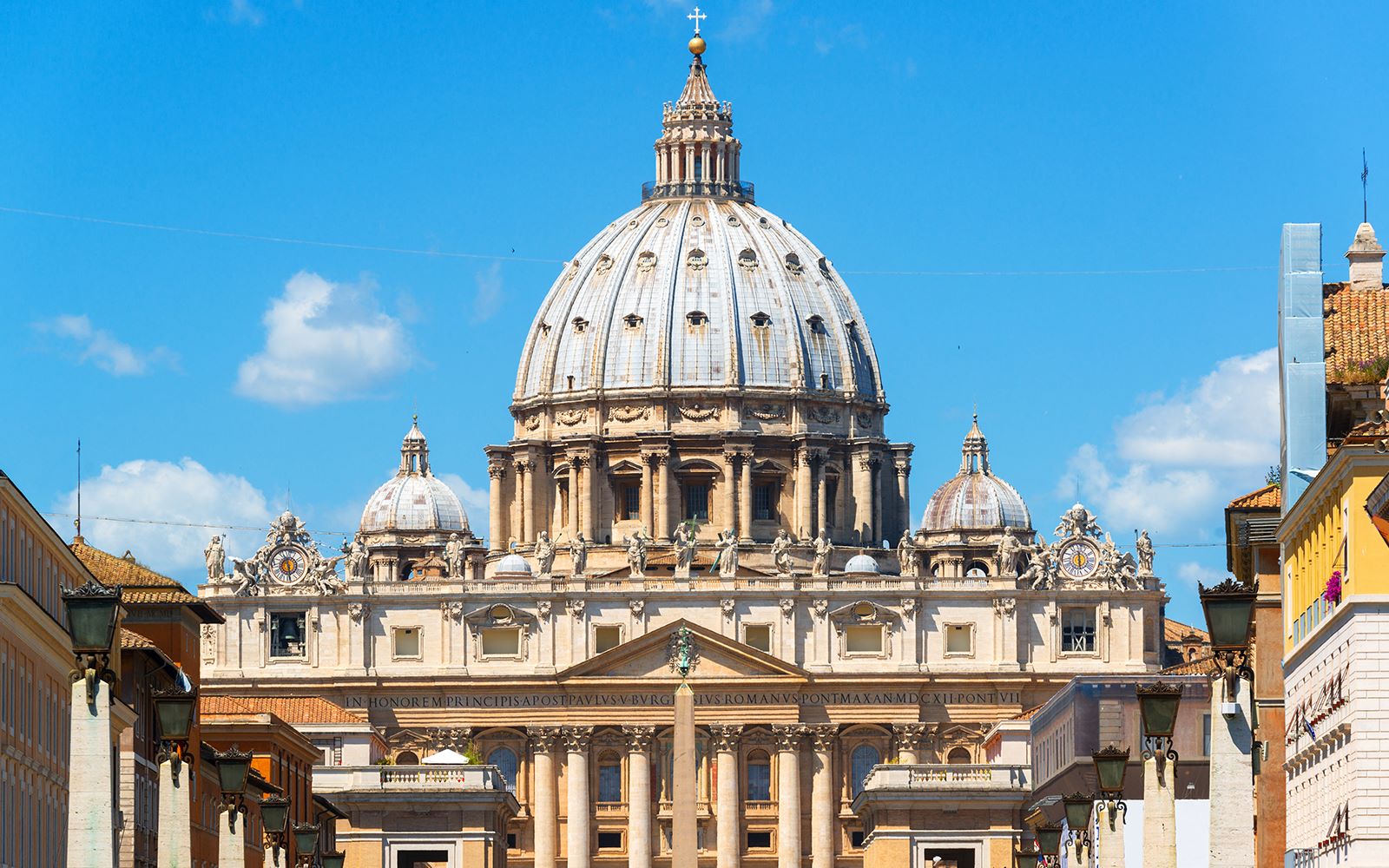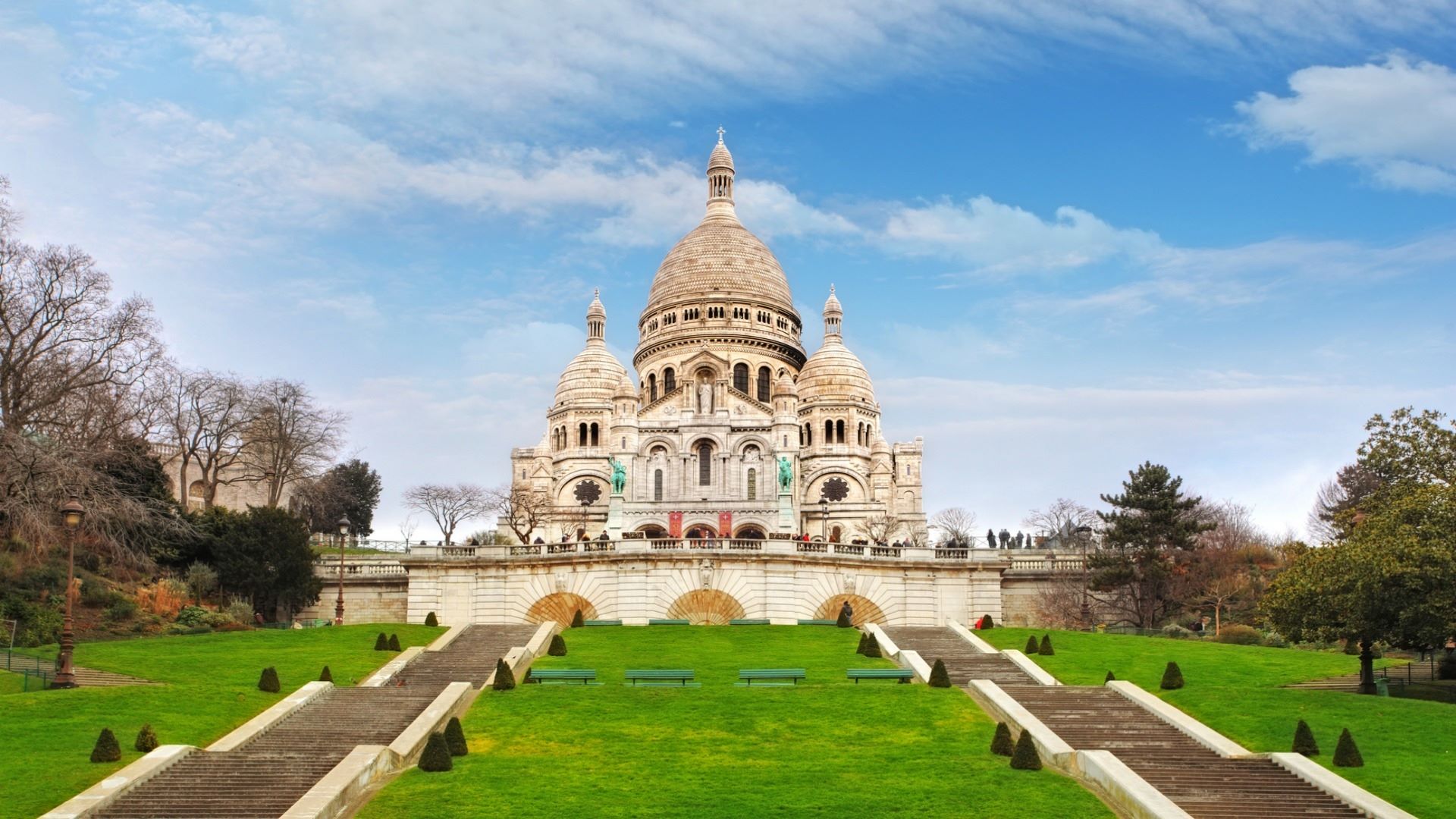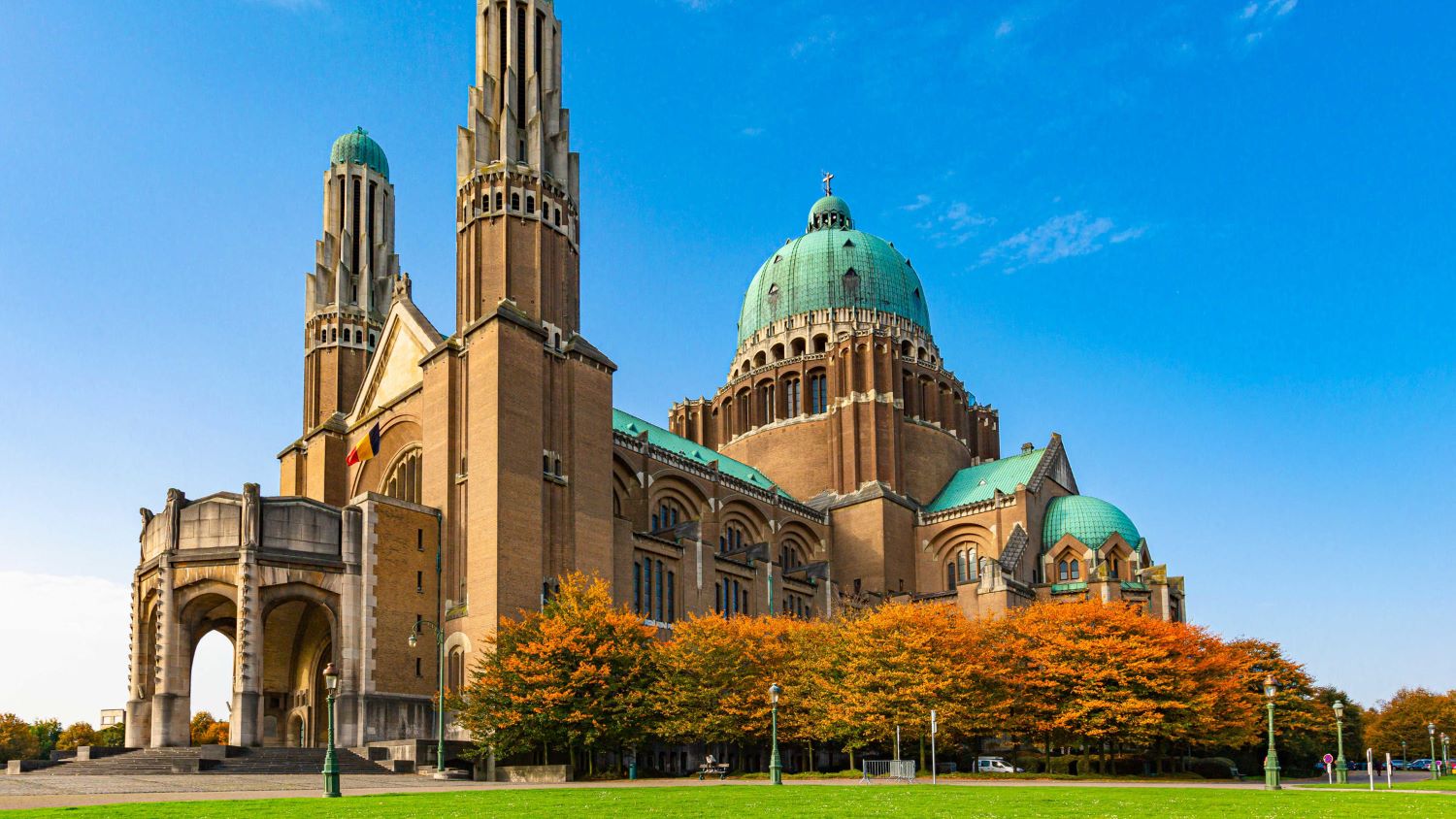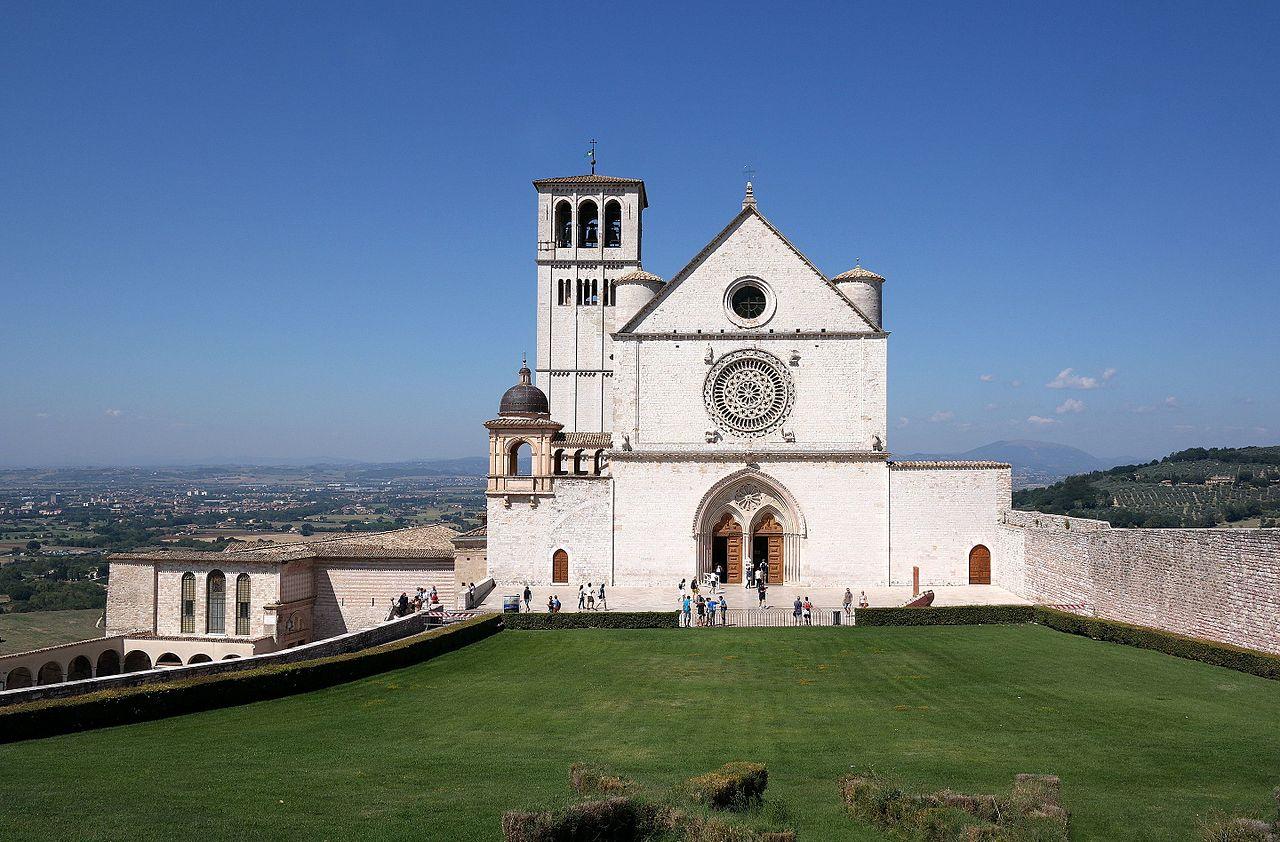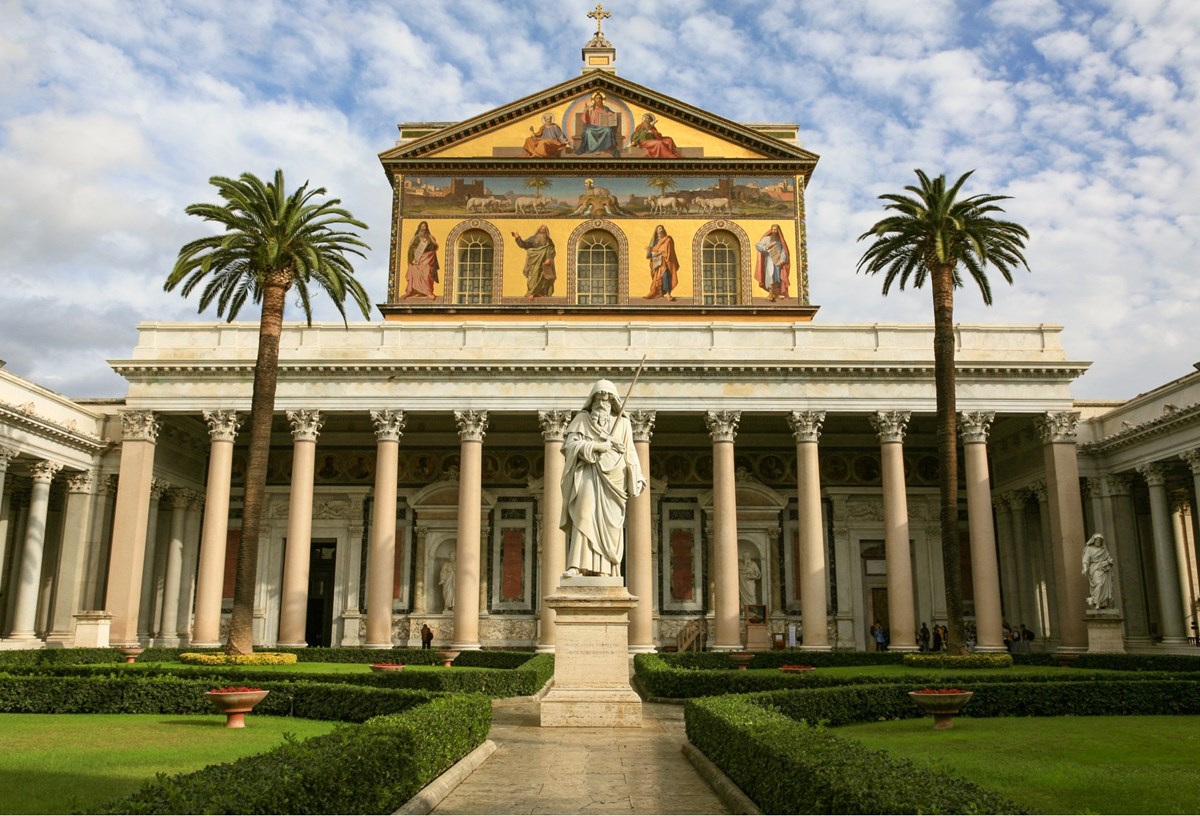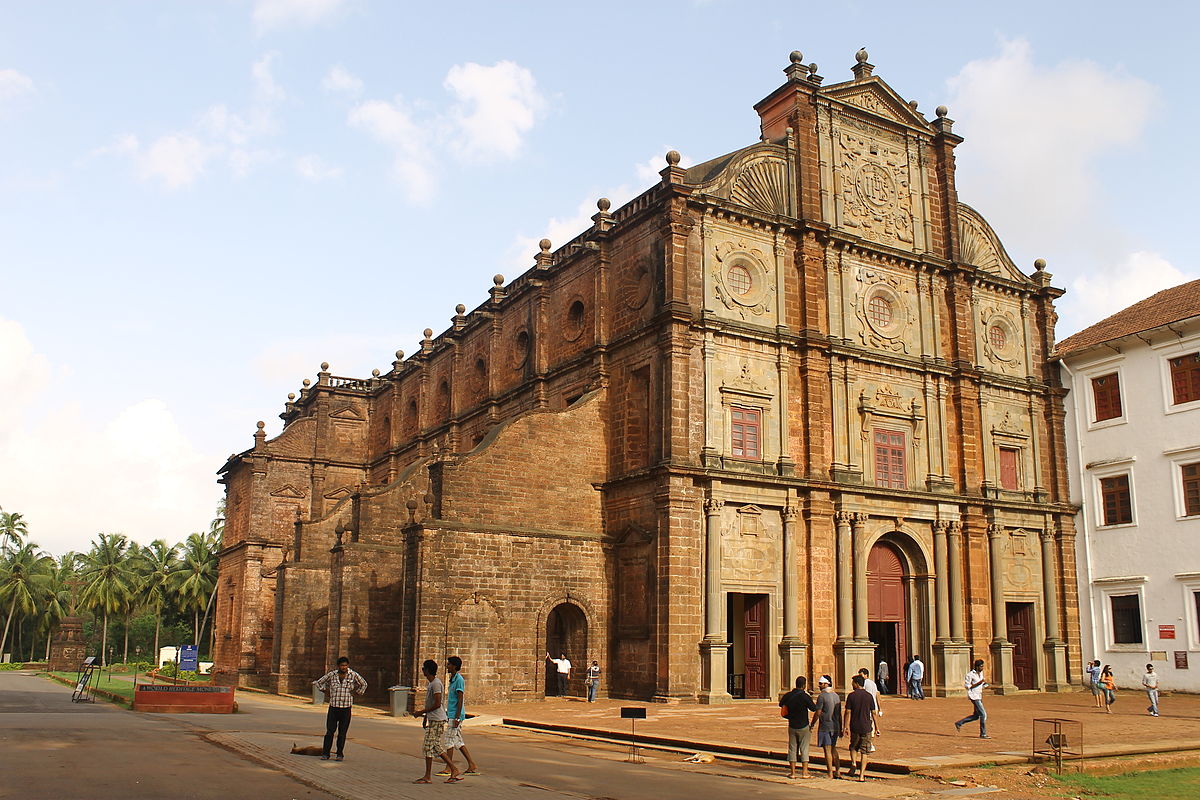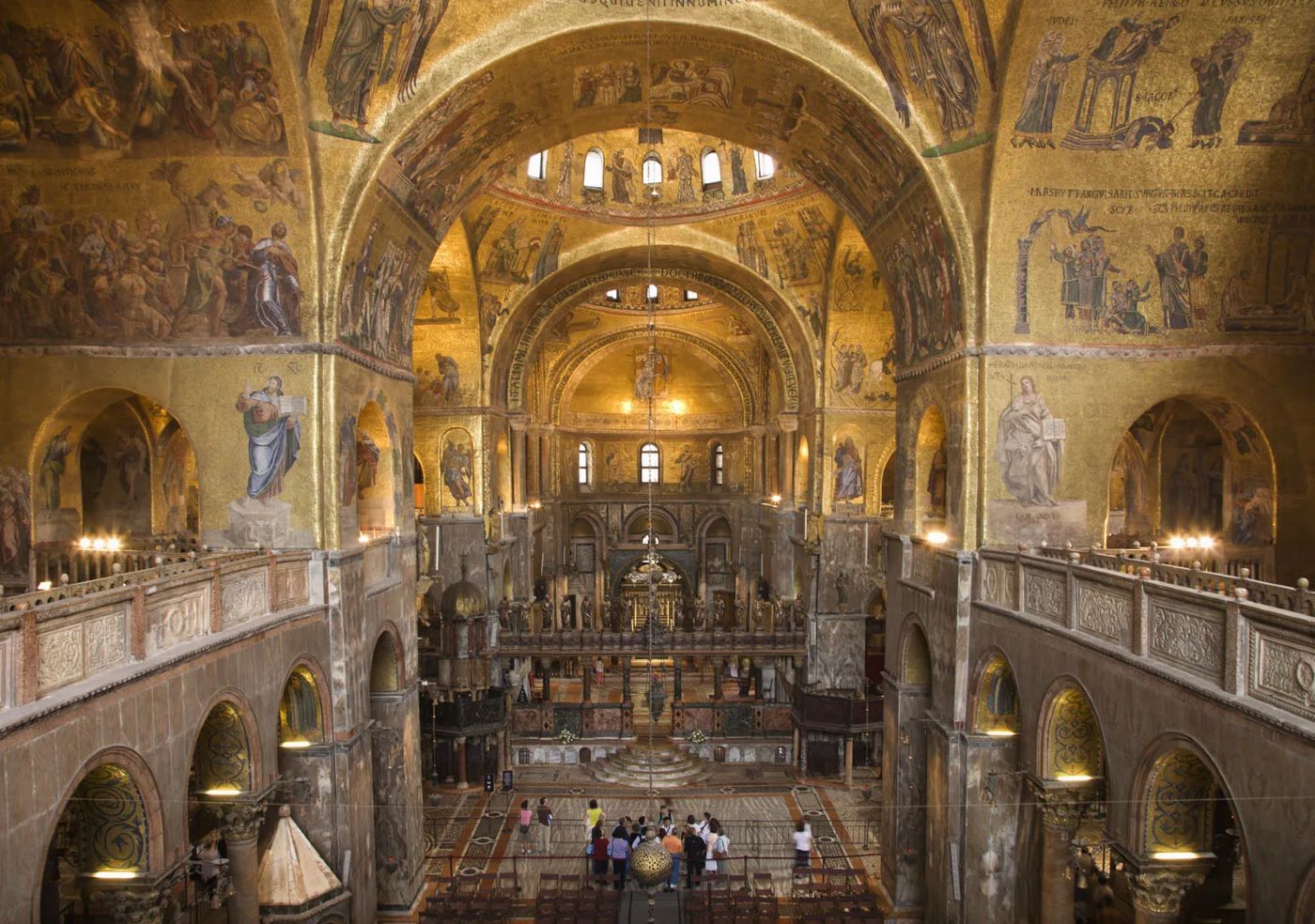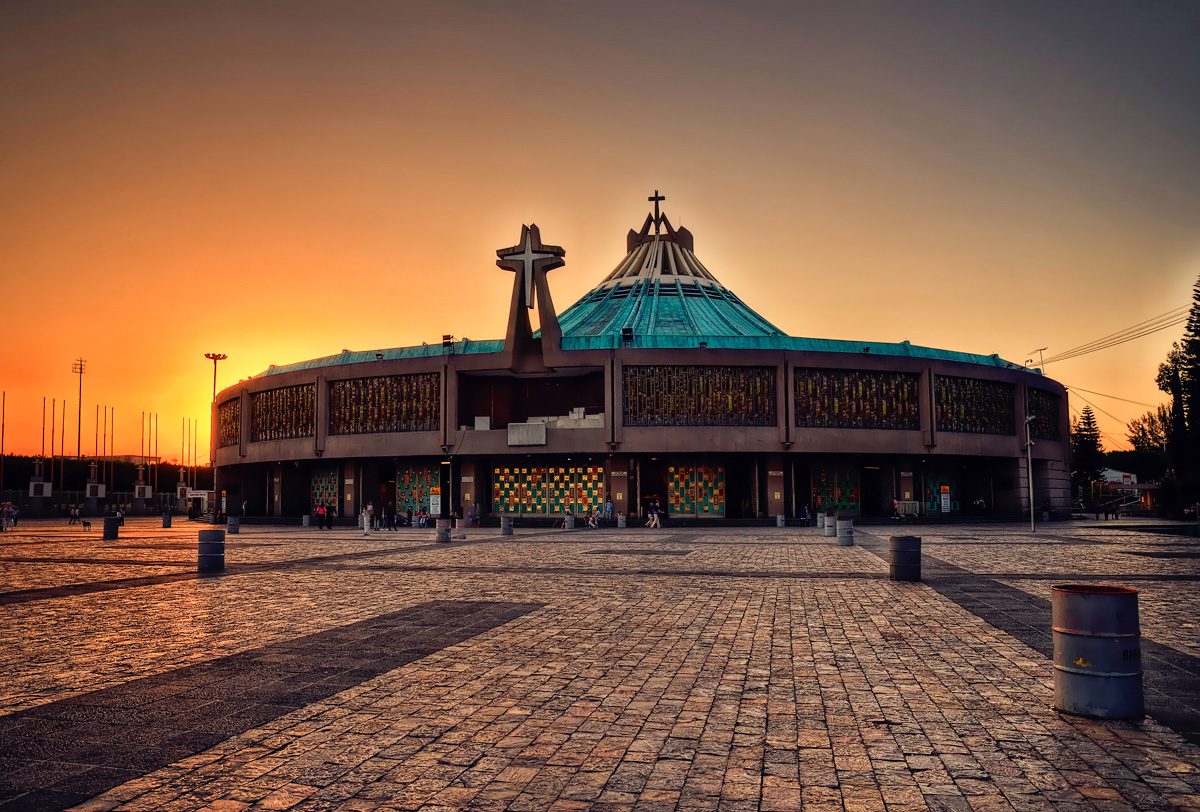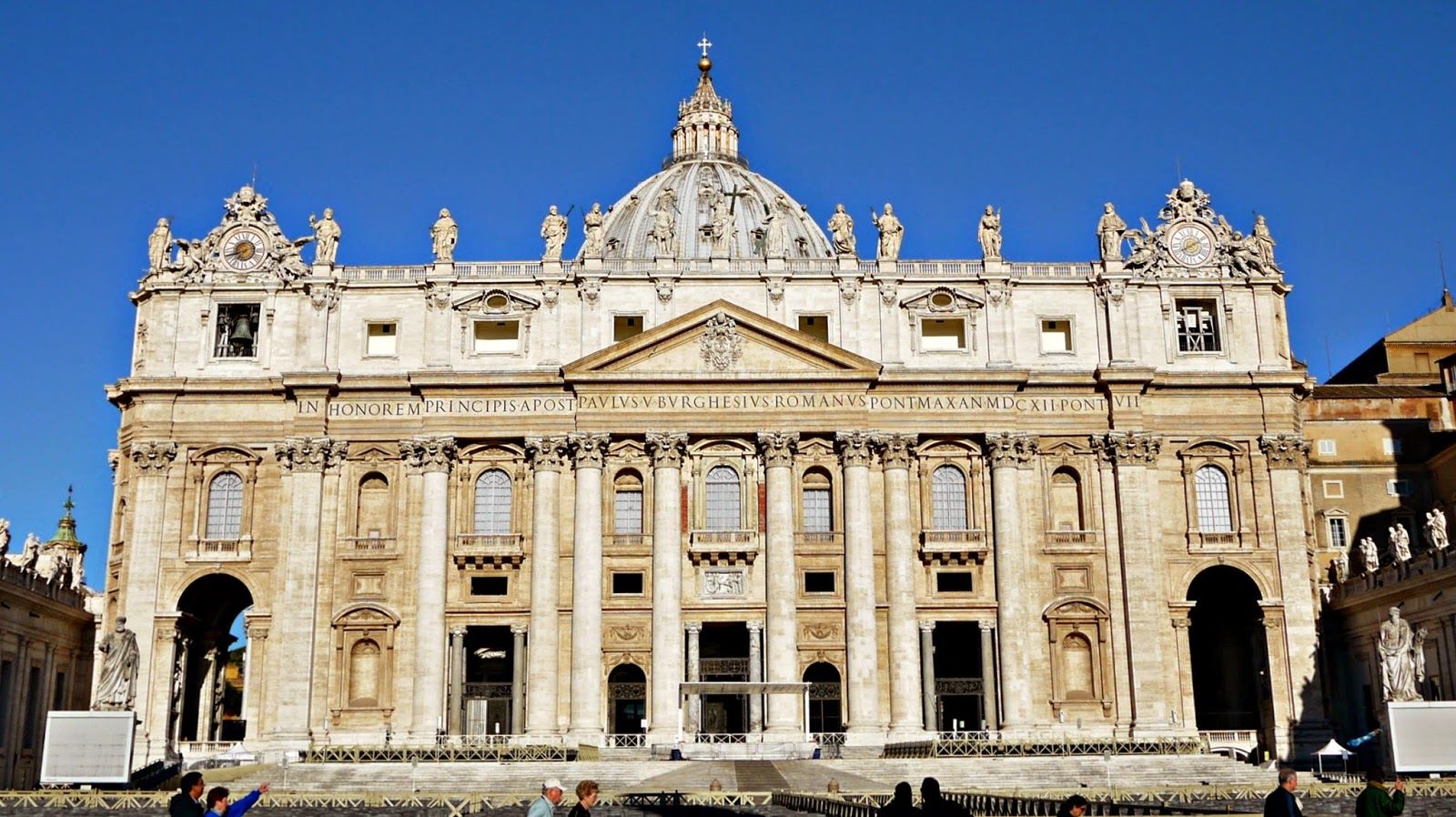Home>Arts and Culture>Where Is Basilica Di Santa Maria Maggiore
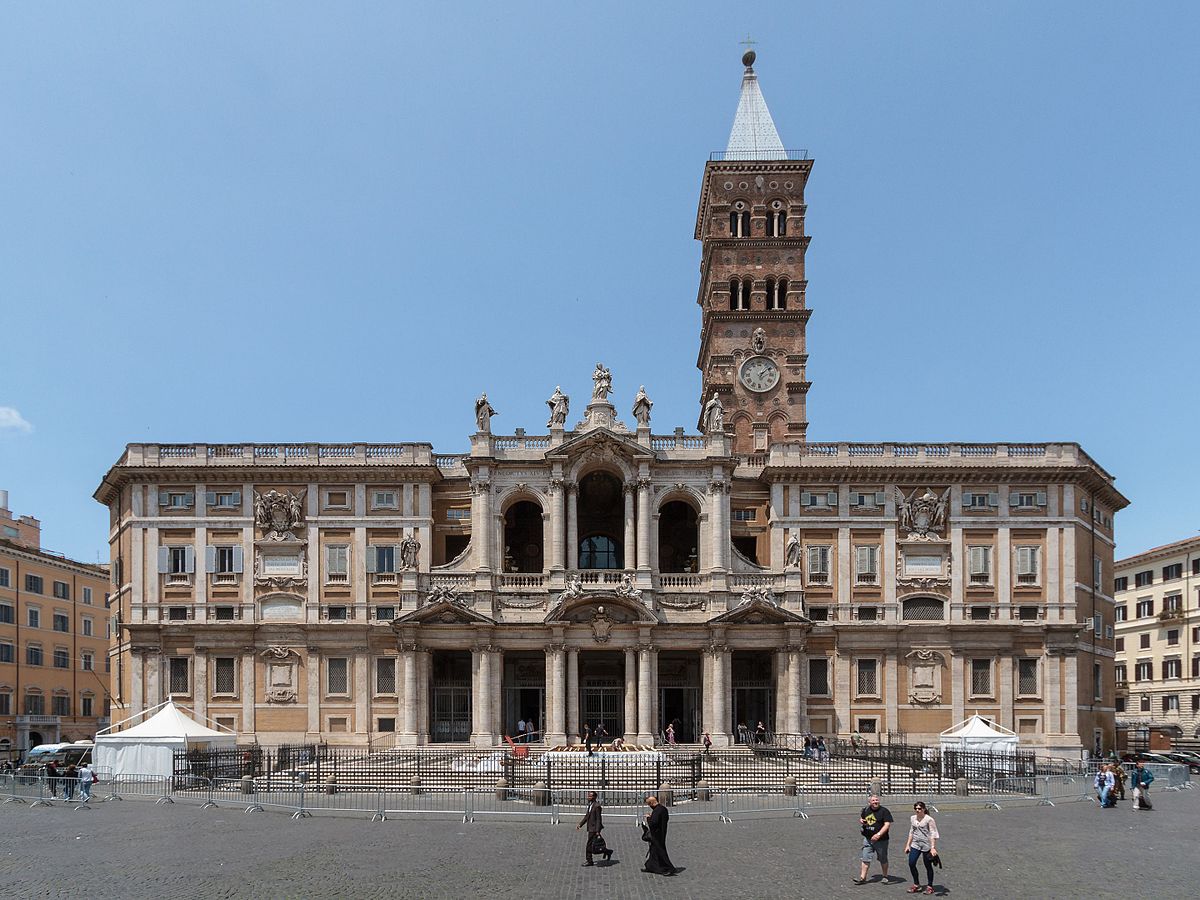

Arts and Culture
Where Is Basilica Di Santa Maria Maggiore
Published: February 11, 2024
Ericka Andersen, an editor at Christian.net, expertly merges digital strategy with content creation, focusing on faith and societal issues. Her communication skills enhance the platform's engaging narratives, fostering meaningful dialogue on belief's impact on society.
Discover the rich history and stunning art at Basilica di Santa Maria Maggiore, a must-see destination for arts and culture enthusiasts. Explore the beauty of this iconic Roman church and its timeless treasures.
(Many of the links in this article redirect to a specific reviewed product. Your purchase of these products through affiliate links helps to generate commission for Christian.net, at no extra cost. Learn more)
Table of Contents
Introduction
Basilica di Santa Maria Maggiore, also known as the Basilica of Saint Mary Major, is a magnificent church located in Rome, Italy. It is one of the four major basilicas in the city and holds significant historical, cultural, and religious importance. This splendid basilica stands as a testament to the rich artistic and architectural heritage of Rome, drawing countless visitors from around the world to marvel at its grandeur.
The basilica's origins can be traced back to the 5th century when, according to legend, the Virgin Mary appeared in a dream to Pope Liberius and a wealthy Roman patrician, John. She instructed them to build a church at the site where snow would miraculously fall on the Esquiline Hill on a hot August day. This event, known as the Miracle of the Snow, led to the construction of the basilica, which was consecrated in 435 AD.
Over the centuries, Basilica di Santa Maria Maggiore has undergone several renovations and expansions, each contributing to its awe-inspiring architecture and artistic splendor. The basilica's enduring significance as a place of worship and pilgrimage has solidified its reputation as a cherished symbol of faith and devotion.
As we delve into the history, architectural features, art and decoration, and practical information about visiting this remarkable site, we will uncover the captivating allure of Basilica di Santa Maria Maggiore and gain a deeper appreciation for its cultural and spiritual significance.
History of Basilica di Santa Maria Maggiore
The history of Basilica di Santa Maria Maggiore is steeped in legend and religious significance, dating back to the 5th century. According to tradition, the construction of the basilica was inspired by a miraculous event known as the "Miracle of the Snow." As the story goes, in the middle of a scorching August night, snow fell on the Esquiline Hill in Rome, outlining the perimeter of the church that was to be built. This extraordinary occurrence was believed to be a divine sign, prompting Pope Liberius and the wealthy patrician John to erect a church in honor of the Virgin Mary.
The basilica was officially consecrated in 435 AD, marking the beginning of its enduring legacy as a revered place of worship. Its construction was further attributed to the Council of Ephesus in 431, which affirmed the title of Mary as the "Mother of God," leading to the establishment of numerous churches dedicated to her honor.
Throughout the centuries, Basilica di Santa Maria Maggiore underwent several renovations and expansions, each adding to its architectural grandeur and cultural significance. The basilica's rich history is reflected in its diverse architectural styles, encompassing elements from the early Christian, Byzantine, and Baroque periods. The stunning mosaics adorning the interior, dating back to the 5th century, stand as a testament to the enduring artistic legacy of the basilica.
The basilica's historical significance extends beyond its architectural splendor. It has served as a symbol of faith, resilience, and devotion, withstanding the test of time and bearing witness to pivotal moments in Roman Catholic history. The continued veneration of Basilica di Santa Maria Maggiore as a major pilgrimage site underscores its enduring importance as a spiritual and cultural landmark.
As we explore the architectural features, art, and practical information about visiting this iconic basilica, we will gain a deeper understanding of its profound historical and religious significance.
Architectural Features
The Basilica di Santa Maria Maggiore boasts a captivating blend of architectural styles that reflect its rich history and cultural significance. As one of the oldest churches dedicated to the Virgin Mary, its architectural features encompass a diverse range of influences, spanning from the early Christian period to the Baroque era.
The basilica's exterior presents a striking façade adorned with intricate details and ornate decorations. The grandeur of its Romanesque bell tower, standing tall against the skyline, commands attention and exemplifies the timeless elegance of medieval architecture. The harmonious fusion of Romanesque and Baroque elements in the exterior design creates a visually stunning and historically significant edifice.
Upon entering the basilica, visitors are greeted by a breathtaking interior adorned with magnificent mosaics, intricate frescoes, and awe-inspiring marble columns. The nave, flanked by majestic arches and adorned with golden coffered ceilings, exudes a sense of grandeur and spiritual reverence. The intricate detailing of the Cosmatesque floor, a distinctive feature of medieval Roman architecture, adds a layer of artistic splendor to the basilica's interior.
One of the most remarkable architectural elements of Basilica di Santa Maria Maggiore is the renowned Sistine Chapel, which predates the more famous chapel in the Vatican. The Sistine Chapel of the basilica features a stunning ceiling adorned with vibrant frescoes depicting scenes from the Old Testament, showcasing the mastery of Renaissance artistry.
The basilica's architectural ensemble also includes the Borghese Chapel, a masterpiece of Baroque design, adorned with intricate stuccowork and a magnificent altarpiece. The harmonious integration of Baroque elements within the basilica's overall architectural composition adds a layer of dynamism and artistic diversity to its sacred spaces.
The harmonious coexistence of diverse architectural styles within Basilica di Santa Maria Maggiore serves as a testament to its enduring legacy as a custodian of artistic and cultural heritage. Each architectural element, from the majestic façade to the intricate interior details, contributes to the basilica's status as a living testament to the evolution of Roman ecclesiastical architecture.
As visitors traverse the hallowed halls of Basilica di Santa Maria Maggiore, they are enveloped in a tapestry of architectural marvels that transcend time, inviting contemplation and admiration for the enduring legacy of this revered religious site.
Art and Decoration
The Basilica di Santa Maria Maggiore stands as a testament to the enduring legacy of artistic expression and religious devotion. Its interior is adorned with a breathtaking array of art and decorations that reflect centuries of creative inspiration and spiritual reverence. As visitors step into the sacred space of the basilica, they are greeted by a symphony of artistic marvels that elevate the soul and ignite the imagination.
The focal point of the basilica's artistic splendor lies in its magnificent mosaics, which date back to the 5th century. These intricate mosaics, adorning the triumphal arch and the nave, depict biblical narratives and scenes from the life of Christ with a level of detail and vibrancy that captivates the beholder. The shimmering gold and vibrant hues of the mosaics create a mesmerizing visual tapestry, inviting contemplation and awe.
The coffered ceiling of the nave, adorned with golden accents and intricate designs, adds a celestial touch to the basilica's interior. The interplay of light and shadow on the gilded surfaces creates an ethereal ambiance, evoking a sense of transcendence and spiritual elevation.
The Borghese Chapel, a masterpiece of Baroque artistry within the basilica, houses a stunning altarpiece created by the renowned artist Gian Lorenzo Bernini. The altarpiece, titled "The Holy Family with Saint John," exudes a sense of dynamic movement and emotional depth, showcasing Bernini's mastery in sculpting marble to convey profound human emotions within a sacred context.
In addition to the mosaics and Baroque masterpieces, the basilica's interior is adorned with exquisite frescoes that adorn the walls and ceilings, each telling a story of faith, devotion, and divine grace. These frescoes, created by master artists of different epochs, contribute to the kaleidoscopic panorama of artistic expression within the sacred walls of Basilica di Santa Maria Maggiore.
The harmonious fusion of mosaics, frescoes, and sculptures within the basilica creates an immersive artistic experience that transcends time and invites visitors to embark on a visual journey through the annals of religious art and devotion. Each artistic element within the basilica's sacred space serves as a testament to the enduring power of creativity and spirituality, enriching the visitor's experience with a profound sense of wonder and contemplation.
As visitors immerse themselves in the art and decorations of Basilica di Santa Maria Maggiore, they are enveloped in a realm where the divine and the artistic converge, inspiring reverence and appreciation for the timeless beauty that adorns this hallowed sanctuary.
Location and Directions
Basilica di Santa Maria Maggiore is strategically situated in the heart of Rome, Italy, making it easily accessible to visitors from all corners of the city. Its address, Piazza di Santa Maria Maggiore, 42, 00185 Roma RM, Italy, places it within close proximity to other iconic landmarks, allowing visitors to seamlessly incorporate a visit to the basilica into their exploration of Rome's cultural and historical treasures.
For those arriving by public transportation, the basilica is conveniently located near several bus stops and metro stations, including the Roma Termini station, which serves as a major transportation hub in Rome. From Roma Termini, visitors can embark on a short and picturesque walk to reach the basilica, immersing themselves in the vibrant ambiance of Rome's bustling streets as they make their way to this architectural marvel.
Additionally, for visitors exploring the city on foot, the basilica's central location allows for a leisurely stroll through Rome's enchanting streets, offering glimpses of ancient ruins, charming piazzas, and bustling markets along the way. The journey to Basilica di Santa Maria Maggiore becomes an integral part of the overall experience, allowing visitors to soak in the city's rich tapestry of history and culture as they approach this sacred site.
Upon arrival at the basilica, visitors are greeted by the awe-inspiring sight of its grand façade, beckoning them to embark on a journey of spiritual and artistic discovery within its hallowed halls. The basilica's central location not only facilitates easy access for visitors but also presents an opportunity to immerse oneself in the vibrant energy of Rome's urban landscape, creating a seamless fusion of historical exploration and contemporary allure.
Whether arriving by public transportation, on foot, or via other means, the journey to Basilica di Santa Maria Maggiore is a harmonious blend of convenience and cultural immersion, setting the stage for a transformative experience within the sacred confines of this revered religious landmark.
Read more: Where Is The Basilica Of The Annunciation
Visiting Hours and Admission
Visiting the Basilica di Santa Maria Maggiore offers a profound opportunity to immerse oneself in the rich tapestry of Roman history, art, and spirituality. To make the most of this experience, it is essential to be aware of the visiting hours and admission details that govern access to this revered site.
The basilica welcomes visitors throughout the week, allowing ample opportunities to explore its architectural and artistic wonders. The visiting hours typically span from early morning to late afternoon, accommodating both local and international visitors seeking to bask in the splendor of this sacred space. It is advisable to check the specific visiting hours in advance, as they may be subject to seasonal variations or special events.
As for admission, the basilica maintains a policy that aligns with its commitment to inclusivity and accessibility. While entry to the basilica is generally free of charge, donations are warmly welcomed to support the preservation and maintenance of this architectural gem. Visitors are encouraged to contribute to the upkeep of the basilica, recognizing the collective responsibility to safeguard its heritage for future generations to cherish.
Guided tours are also available for those seeking a deeper understanding of the basilica's historical and artistic significance. Knowledgeable guides lead visitors through the hallowed halls, offering insights into the symbolism, stories, and architectural marvels that define Basilica di Santa Maria Maggiore. These tours provide a captivating narrative that brings the basilica's heritage to life, enriching the visitor's experience with a deeper appreciation for its cultural and spiritual resonance.
It is important to note that the basilica holds a sacred place in the hearts of devout worshippers, and visitors are kindly requested to observe respectful behavior during their exploration of the site. This includes adhering to dress codes that reflect the solemnity of the space and refraining from disruptive behavior out of reverence for those who come to seek solace and spiritual connection within the basilica's walls.
By familiarizing oneself with the visiting hours, admission details, and guidelines for respectful conduct, visitors can embark on a meaningful journey through the hallowed halls of Basilica di Santa Maria Maggiore, embracing the opportunity to witness the convergence of art, history, and faith in this timeless sanctuary.
Conclusion
In conclusion, the Basilica di Santa Maria Maggiore stands as a timeless testament to the enduring legacy of art, architecture, and faith. Its rich history, dating back to the 5th century, intertwines with the miraculous legend of the snowfall on the Esquiline Hill, creating a narrative that transcends time and captivates the imagination. The basilica's architectural features, spanning from Romanesque to Baroque, showcase a harmonious fusion of styles that reflect the evolution of ecclesiastical design over the centuries.
The artistic splendor within the basilica, from the shimmering mosaics to the masterful frescoes and sculptures, creates an immersive experience that invites visitors to embark on a visual journey through the annals of religious art and devotion. Each artistic element within the sacred space serves as a testament to the enduring power of creativity and spirituality, enriching the visitor's experience with a profound sense of wonder and contemplation.
Furthermore, the basilica's central location in the heart of Rome facilitates easy access for visitors, allowing them to seamlessly incorporate a visit to this architectural marvel into their exploration of the city's cultural and historical treasures. The journey to Basilica di Santa Maria Maggiore becomes an integral part of the overall experience, inviting visitors to soak in the city's rich tapestry of history and culture as they approach this sacred site.
Understanding the visiting hours, admission details, and guidelines for respectful conduct ensures that visitors can embark on a meaningful journey through the hallowed halls of Basilica di Santa Maria Maggiore, embracing the opportunity to witness the convergence of art, history, and faith in this timeless sanctuary.
In essence, a visit to the Basilica di Santa Maria Maggiore transcends the boundaries of time, inviting individuals from all walks of life to partake in a profound exploration of human creativity, spiritual devotion, and the enduring legacy of one of Rome's most cherished architectural and cultural treasures.

